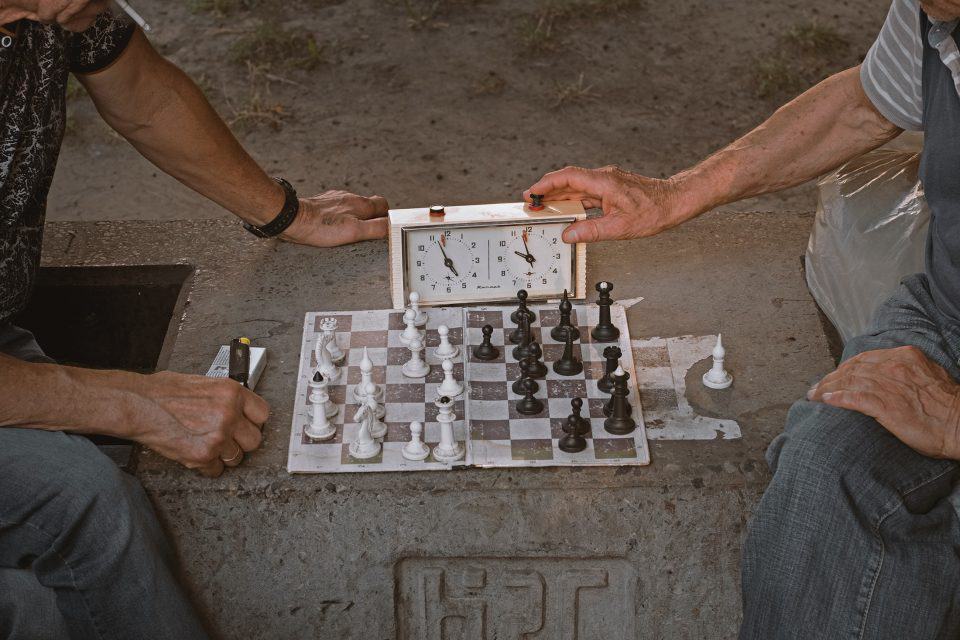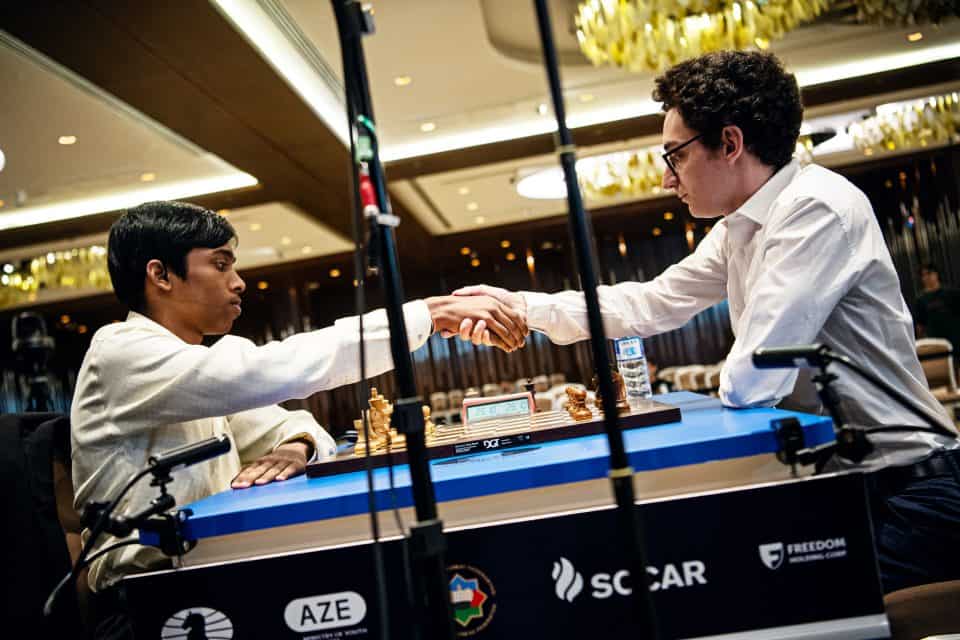The player handling the black pieces is usually the person to starts the clock to allow White to make the first move.
Afterward the first move (say d4 or e4), White presses the clock to immediately stop the countdown on their time and start that of Black. It continues this way (back and forth) till the game is concluded.
There is no official chess timekeeper hovering over the board, stopwatch in hand, ready to yell ‘Go!’ as soon as the first pawn is pushed.
Black just begins the clock in chess.
Rules for Clock Use in Official Chess Games
Here are some important rules you need to know:
- Once your game begins, the arbiter will start your clock. If there’s no arbiter, shake hands with your opponent and start the clock.
- The player whose clock is running must press their clock button after making a move. This stops their time and starts the opponent’s clock. If you forget, your time will continue running.
- Both players get a set amount of time to complete all their moves, like 90 minutes. Each time you press the clock, your remaining time decreases. The little displays will show how much time is left for each player.
- If your clock reaches zero, you lose on time. To avoid this, make your moves carefully but promptly. If your opponent’s time runs out, their remaining moves are forfeit and you win.
You may also want to know what side the chess clock goes on.
Let us know if you found this valuable.







join the conversation